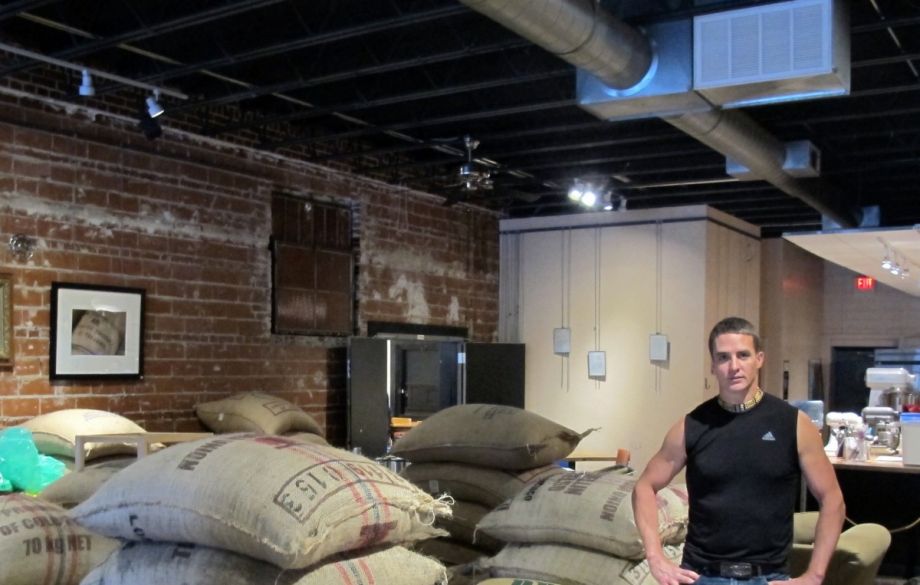Ranking 100 U.S. Metros on Growth and Inclusion

A coffee company owner in Tulsa, whose metro region ranks as a top performer when it comes to inclusive regional growth in the U.S. in a new study. (AP Photo/Justin Juozapavicius)
Where once there was a seemingly endless competition among cities and outlying suburbs to see who could steal away each other’s corporate headquarters or factories with the best tax incentives, starving municipal budgets and lining the pockets of shareholders, there’s now a hint of big-picture cooperation. A lot of that arm wrestling is still going on, to be sure, but history’s trend lines are leaning toward a future where entire regions work together to build economies that work for all.
Today, the Brookings Institution’s Metropolitan Policy Program released a report and data visualization toolthat will be useful for those looking to foster that unified feeling.
“Metro Monitor: Tracking growth, prosperity, and inclusion in the 100 largest U.S. metropolitan areas” is a response to the shift toward better regional coordination of economic policies and toward measuring regional economic success by also how growth is achieved and who benefits from it.
“We’re seeing a trend where a lot of regional economic development organizations are starting to look beyond growth, and we’re plugging into that conversation,” says Richard Shearer, senior research analyst and primary author of the report. “Having a shared vocabulary, a shared point of reference regionally is important for growth, prosperity and inclusion.”
The Brookings team aggregated data from three different sources: Moody’s Analytics, U.S. Census Bureau population estimates and decennial census data. Getting the data to be comparable across metropolitan areas also meant having to aggregate county-level data for some data sets, as well as millions of survey responses not always grouped by consistent metropolitan areas.
“This information isn’t always accessible, it’s buried at different sources, not all public,” Shearer says. All in all, the team went over about 250 gigabytes of spreadsheets and other data files to assemble the report.
What did they find, after all that? From 2009 to 2014, 95 metropolitan areas saw progress on conventional growth measures (gross metropolitan product, total jobs, aggregate wages). Only 63 metropolitan areas saw progress on prosperity measures (productivity, average annual wages, living standards). A mere eight metropolitan areas registered progress on inclusion measures across the board in that timeframe.
“Growth and prosperity have not seemed to have impacted inclusion outcomes to a great extent,” Shearer says.
The report’s inclusion measures begin with median wage, which isn’t influenced by wage growth only for the top half of earners in the population. Employment rate, measured as the percentage of the working age (18-65) population with a job, also falls under the report’s inclusion metrics.
“Using that ratio as an employment measure lets us get around the fact that even though some outside that age range are working, most are in school or retired,” Shearer explains.
Last, but not least, the report’s inclusion measures considered what’s called “relative income poverty” — the share of workers who earn less than half the median income. It’s a popular yardstick in affordable housing development; it’s not uncommon for affordable housing to be defined as costing no more than one-third of income for someone earning half the area median income.

From the Brookings Institution’s “Metro Monitor: Tracking growth, prosperity, and inclusion in the 100 largest U.S. metropolitan areas”
The report does not have an exact focus on inequality (which is a focus of other work from Brookings). Shearer says they wanted to focus on outcomes around inclusion rather than changes in disparity. It’s about expanding upon the growth mindset — more jobs, more prosperity, more inclusion — rather than mixing in something that should be moving in the other direction, like inequality.
“Inequality is more complicated and also affected by things that are largely outside the scope of what mayors or local governments can control,” Shearer explains.
The top five performers overall on inclusion: Tulsa, Oklahoma; Springfield, Massachusetts; San Jose, California; Grand Rapids, Michigan; and Detroit.

From the Brookings Institution’s “Metro Monitor: Tracking growth, prosperity, and inclusion in the 100 largest U.S. metropolitan areas”
Hold the celebrations, however.
“Many of the places ranked highly on inclusion not because they saw progress, but because they saw less regression than their peers,” Shearer says.
The report also looks at inclusion by race and ethnicity. The median wage gap between whites and other races grew in 58 out of 100 metropolitan areas from 2009-2014. The relative income poverty gap between whites and other races grew as well, in 69 metropolitan areas. Across the board, progress has been mostly mixed, with most areas experiencing growing and shrinking gaps across the three inclusion indicators.
Shearer notes that areas that performed best on overall inclusion performed poorly on closing racial and ethnic gaps — and vice versa. Across the Great Lakes metropolitan regions, which did well on overall inclusion, most or all of the benefits accrued to whites. Meanwhile, in the Sun Belt, racial gaps closed, but only because whites at the lower end of the income ladder did worse than in other regions.
“In neither case is the story especially good,” Shearer says. “Gaps are shrinking for the wrong reasons and gaps are growing for the wrong reasons.”
Brookings plans to publish the report on an annual basis.
The Equity Factor is made possible with the support of the Surdna Foundation.

Oscar is a Next City 2015-2016 equitable cities fellow. A New York City-based journalist with a background in global development and social enterprise, he has written about impact investing, microfinance, fair trade, entrepreneurship and more for publications such as Fast Company and NextBillion.net. He has a B.A. in Economics from Villanova University.

No comments:
Post a Comment
Please leave a comment-- or suggestions, particularly of topics and places you'd like to see covered